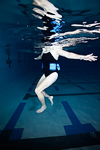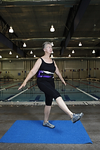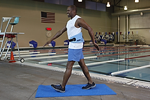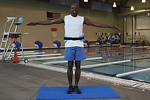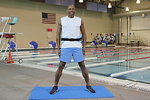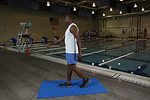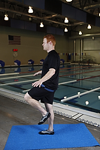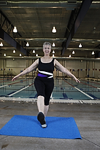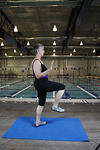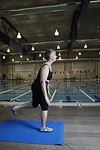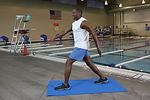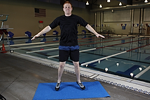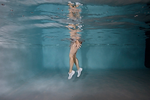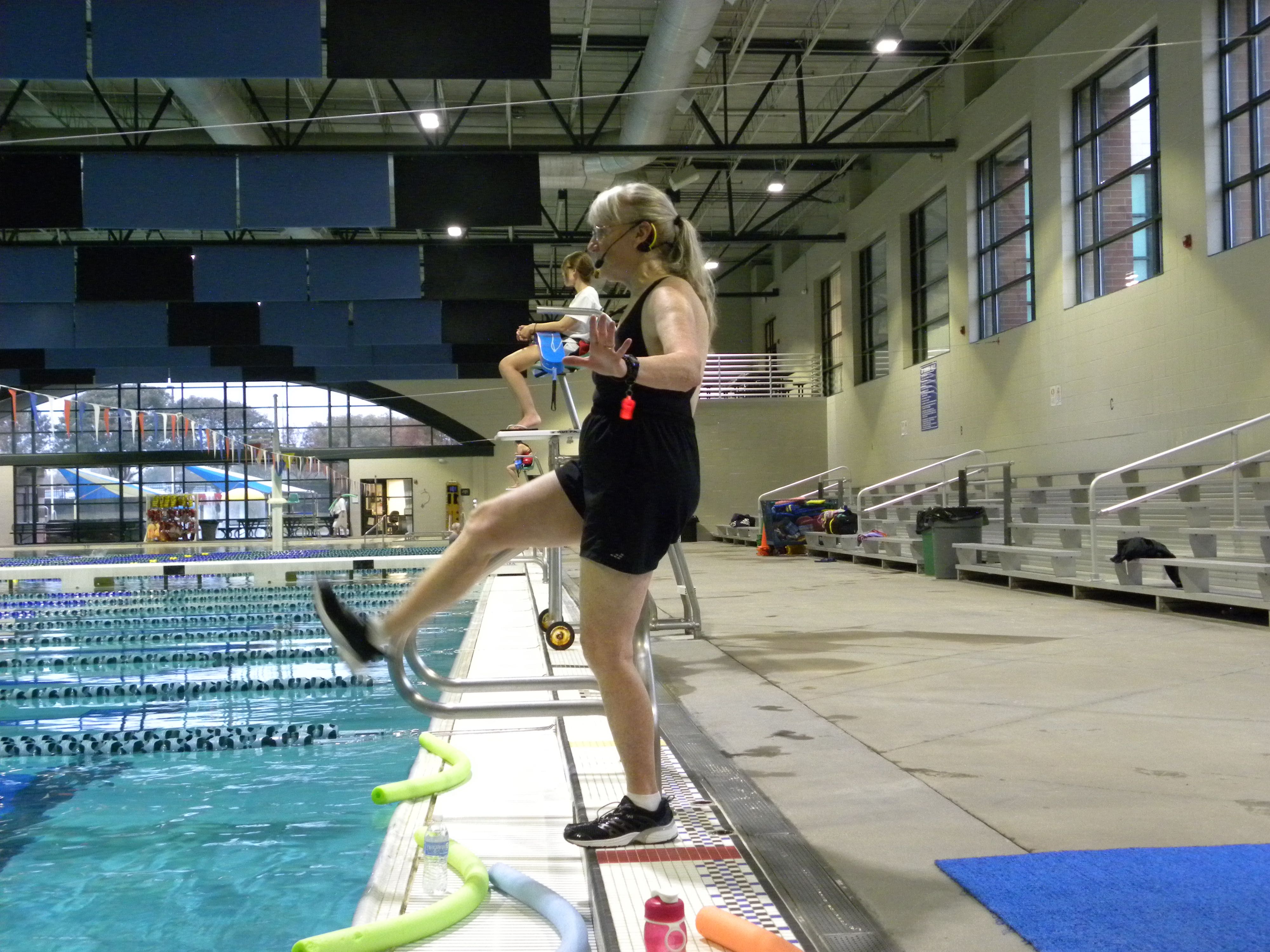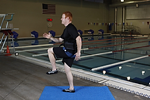
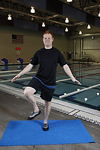
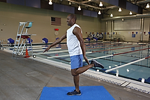
Can you believe that 2016 is here already? Perhaps your class took a break for the holidays, but now it is time to get back into your routine. Freshen up that routine with some new variations on one of the basic exercises for shallow water.
Variations were described in my last Blog post. This time I’d like to apply those variations to a specific exercise: the knee high jog. Before adding any variations though, make sure that you are jogging with good form. The spine is in neutral, the core is braced so that the shoulders are stationary and the head is not rocking from side to side, and the thighs are coming up no higher than parallel to the floor.
If you open up the hips, the knee high jog becomes a straddle jog. If you lift your heels instead of your knees, it becomes a heel jog.
Now change the arm moves. Try an arm swing, a lat pull-down, a shoulder sweep, a shoulder blade squeeze, a row, an arm curl, a triceps extension, or a rotator cuff sweep. The arm swing can be done with unison arms, the lat pull-down with alternating arms and the shoulder sweep can become a breaststroke or reverse breaststroke. Slice the hands or make the palms face the direction of motion. Put one hand on the hip and perform the arm move with a single arm. Add pulses. Combine moves, for example a lat pull-down and a shoulder sweep. Or jog with hands on hips, arms floating near the surface of the water, or sculling.
Vary the tempo. Water tempo jogging can easily be sped up to land tempo without losing range of motion. With a half water tempo you will bounce on both feet, lift one knee (or heel), bounce on both feet and lift the other knee (or heel). Pauses can be added to challenge balance. For example, “single, single, hold” means lifting the R knee, L knee, R knee and hold for 2 counts. With doubles you lift each knee 2 times. “Single, single, double” means R knee, L knee, R knee, R knee. Syncopate is 2 counts at water tempo and 3 counts at land tempo, sometimes described as slow, slow, quick quick quick.
Knee high jog, straddle jog and heel jog can all be done with rebounding. Perform the knee high jog in the neutral position by flexing the knees and hips to submerge the body to shoulder depth. A straddle jog in neutral becomes a frog jump. A heel jog becomes a seated hamstring curl. A suspended jog is a seated leg press with hands sculling or you can do a suspended bicycle instead. Frog jumps become suspended frogs. Seated hamstring curls can be done without touching the floor. All 3 types of jogs can be done grounded. One foot stays on the floor and the other knee is lifted in front or to the side or the heel is lifted in back. Try doing 1-4 R knee lifts, R side lifts, R heel lifts, then switch to the L leg.
Increase the range of motion by taking the feet wider apart. Knee high jog and straddle jog become run tires (like running through tires in football practice) or you can leap forward or sideways. Heel jog can be done with the feet apart or turn the short lever into a long lever and do a skate kick. Cross the mid-line of the body with crossover knees or an inner thigh lift or a hopscotch.
Power can be added to any of these moves. So can turns and traveling in multiple directions.
Some of the most interesting variations are created by combining 2 or more moves. In, in, out, out is a combination of knee high jog and run tires. Combine in, in, out, out with 2 jacks or with one inner thigh lift or with one hopscotch. Chorus line kick is one knee lift and one kick. Do 3 straddle jogs and one side quad kick. Or 3 heel jogs and one kick to the corner. Try more complex combinations such as R knee lift, L knee lift, L quad kick, L lunge. The lunge goes into a L knee lift and the sequence repeats. Use your creativity and you will be able come up with your own new combinations.

